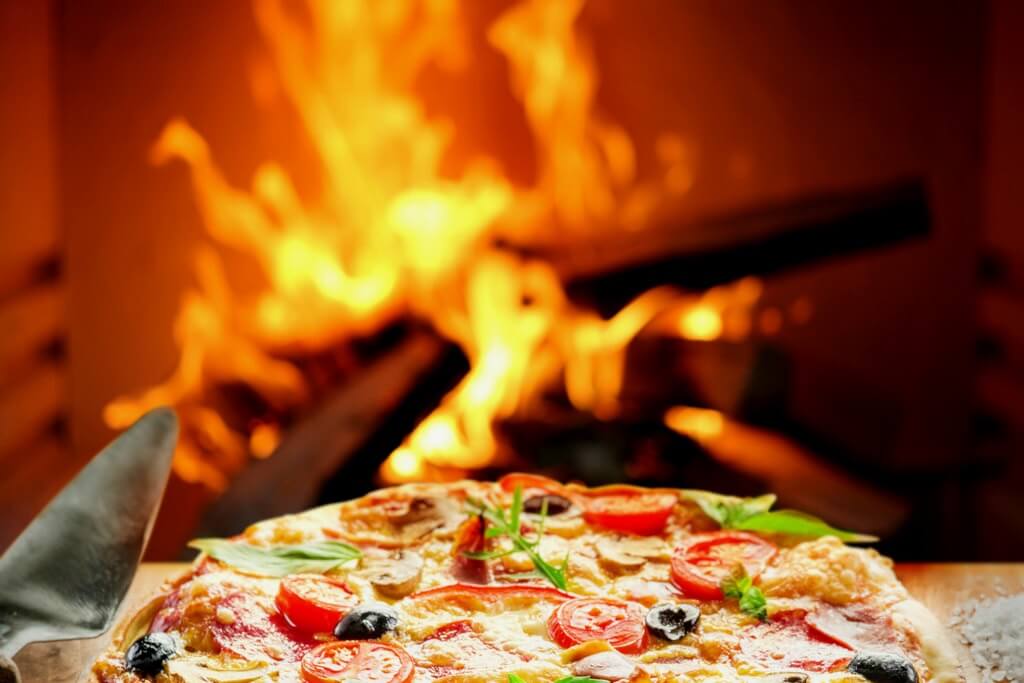Until a decade ago, cooking a pizza was only for professionals. Basically, the old-generation electric ovens that reach temperatures suitable for baking cakes and biscuits can achieve good results cooking pizza as well, but rarely will they be on a par with the products used in pizzerias. Today a sort of improvement is underway: a non-negligible part of amateur pizza makers, thanks to the Internet (Web forums and the large amount of info about dough-making techniques) and professional flours finally hitting the market, has started to prepare pizzas closer to professional standards. The study of kneading methods in industry forums as well as the belated availability of quality raw materials has made all this a reality. Besides, we can’t forget the development of high-performing cooking appliances such as modern pizza ovens.
The best pizza oven for a professional cooking at your home
Changing your home oven can be a tad upsetting especially when it is an oven whose qualities and defects are well known. You have to get the hang of how the new oven is working and, above all, it must replace the old one as best as possible. It’s certainly not easy to find out the best home pizza oven among all the products on the market but by analysing the characteristics and properties of each item the choice for the user will be less difficult. Kneading techniques and quality raw materials are not enough to make a good pizza; the amateur pizza chef must use an excellent pizza oven – which brings us to the main point – which oven to choose?
Home electric and gas ovens
These are the classic built-in ovens able to cook delicious pizzas as long as you follow some simple guidelines to optimise your cooking. Nowadays, nearly all electric ovens reach 250°C (480°F) with some models that, at least on paper, max out at 300°C (570°F). The various settings for pizza cooking, unless they don’t contemplate sharp increases in temperature, hardly help. To cook pizza you need a lot of static heat so you’d better not fan baking to avoid drying out the pizza dough during cooking. The best way to cook pizza in the home oven is in the baking pan: preheat the oven for 40 minutes at most, place the pan directly on the oven floor where the temperature is higher and the metal of the oven base will transmit the heat straight to the pan. If you have a gas oven, you need to take some precautions: the flame under the oven base makes cooking more difficult, so place the pan on the lower position rack to prevent the pizza bottom from burning.
Portable electric pizza ovens
Going by the name of “small ovens”, they were the first pizza ovens to make it to the home market several years ago and they are still all the rage among the pizza aficionados that pull out all the stops to soup them up and improve their performance. These spherical “little boys” have an aluminium shell-shaped structure and cook only round pizzas on refractory stone thanks to two heating elements connected to a single thermostat. They reach 400°C (750°F) and produce really superb pizzas. Incredibly light you can move them easily and place them everywhere.
Gas-fired pizza ovens
They should not be mistaken for traditional built-in ovens because these appliances are powered by gas burners that duplicate the heat of the fire obtained by burning wood. The gas-fired pizza ovens have the same frame as the wood-fired ones and can be powered either by firewood or gas by means of a burner connected to the gas network or a cylinder. They require no flue to use them indoors such as in taverns or kitchens. Pizzas are so scrumptious that it will be hard to distinguish a pizza cooked in a gas-fired oven with a pizza cooked in a wood-fired one.
Semi-professional electric ovens
These are devices targeted at amateur professional pizza makers, an increasingly widespread category. Customers that buy this kind of ovens are basically driven amateur pizza makers who want to have a high-performance tool at their fingertips that can reproduce professional cooking without blowing up their electricity bill. These ovens are as deep as the built-in ones but the cooking chamber is smaller and lower; they are specially designed for baking pizzas and focaccias. Their base is in refractory materials and they can reach 450°C (840°F) thanks to the heating elements controlled by one couple of adjustable thermostats. They are quite miniature professional ovens which feel at home in a foodie’s kitchen. They can flawlessly bake every type of pizza but the snag is that their market is nearly exclusively online.

Home wood-fired ovens
This is the fastest-growing sector in the last ten years: manufacturers have figured out the consumers’ need to have a small wood-burning oven to put in the garden or on the terrace and so they have conceived small-sized, light and not so bulky devices. The problem with refractory material ovens is that it takes forever for heating them and so you need to fire them up a few hours before to reach the right cooking temperature. Of course, pizzerias don’t run that risk as their ovens work for hours on end and even when the fire is extinguished they keep a temperature of about 200°C (400°F) day in, day out. The amateur pizza maker, instead, who makes pizza, let’s say, once a week must preheat the oven several hours before to absorb humidity and to reach the correct temperature. To solve this complication, some companies have created pizza ovens with a steel dome and a refractory base so that the metal structure heats up very quickly and soaks up less humidity than a refractory oven.
Indirect cooking wood-fired ovens
These ovens have a cooking chamber separated from the combustion chamber; the firewood burns in an airtight compartment and the heat is transferred to the cooking chamber whose base is made of refractory material. Although they are fuelled by wood, these appliances are not in the same league as the real pizza ovens but they still are an effective solution for cooking pan pizza or pizza “alla pala”(on the peel), two recipes that need constant heat and not too fast a flame. They require a flue and can be placed outdoors, in the garden or on the terrace for instance.
Ovens: to each his own!
The choice of a pizza oven is often the final part of a long evaluation process. Not everyone can afford expensive and sophisticated equipment such as that used in working environments but when it comes to cooking appliances there are many oven models and brands that suit every taste and need. As mentioned above, in addition to classic built-in devices, the current market offers a wide array of home ovens to cook your perfect pizza so that finding the product that best matches your needs is no picnic and more so if you don’t know what you want. Much will depend on the type of pizza that the “white art” wizard wants to make but other key factors in the oven choice are probably where it should be placed, how big it should be and how it should be used; it goes without saying that if you plan to use your oven every so often the portable electric pizza one is the most appropriate choice. The wood-burning oven is the ne plus ultra of pizzeria ovens but unfortunately only the luckiest can have it in their houses. Amateur professional pizza makers that are nuts about details, programs, functions and accessories will certainly opt for semi-professional home ovens. In fact, if you decide to go for round pizzas you will need more powerful ovens reaching higher temperatures and in this regard the semi-professional home oven ticks all the boxes. The new generation ovens include some features that you couldn’t even imagine until a few years ago. The pizza makers to be will judge!



